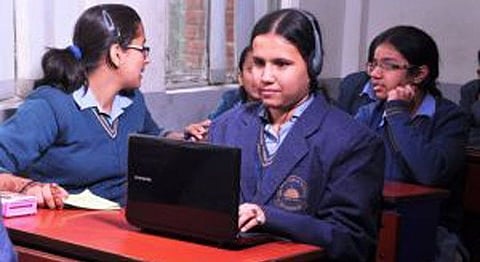
- HOMEGROWN WORLD
- #HGCREATORS
- #HGEXPLORE
- #HGVOICES
- #HGSHOP
- CAREERS
- ABOUT US
- CONTACT US

Stories inspire people everyday. No matter the genre, people need stories to give them hope, make them laugh and cry, or to just pass the time. These days you can flick on your TV, stroll to the theatre or just switch on your laptop and have a myriad of movie options available to you, a sea of stories so to speak. Most of us have become rather used to this luxury, however, if you can’t see you are often marginalised from this prominent tradition of storytelling.
That’s why Saksham, an Indian NGO, has been working to help India’s visual impaired community, made up of millions, and better integrate them into widely enjoyed culture of storytelling, because “If you can’t see, it doesn’t mean you can’t dream”.
Saksham’s ongoing project — ‘Audio Described Movies for Blind People’ is designed to provide those who are blind or visually impaired with a “true sense of what is happening on screen, with a description of scenery, costumes, facial expression and body language, spoken between natural pauses in dialogue.”
The following audio described films created by Saksham are distributed free of cost, and have introduced many of India’s of visually impaired community to a diverse selection of Indian film. The audio described movies scaffold the non-dialogue parts of movies with narrated descriptions that strongly enhance the movie experience for the visually impaired. Currently, Saksham has worked to audio describe the well-curate list 22 movie shown below.
These are just some of the first steps to better include the visually impaired, instead of blindsiding them. Thankfully organisations like UNESCO Delhi have been working to expand the cultural content available to this large community with initiatives like accessible museums and heritage sites, accessible content, art education, as well as a dance curriculum. Yet, despite this good work carried out by non-profits and NGOs there are many ways for you to help the visually impaired, from reading books to volunteering to go on walks with them.
